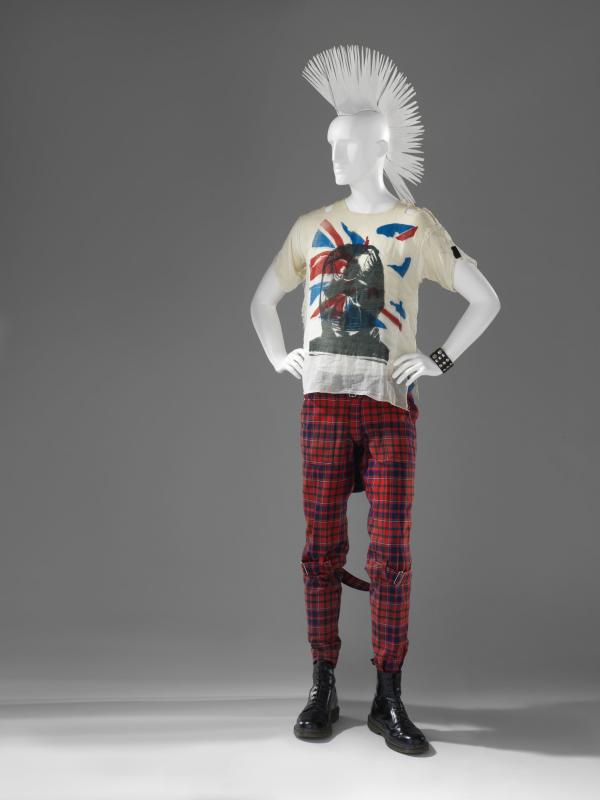At first glance, a punk ensemble from 1976–77 seems to be light years removed from a zoot suit from the early 1940s. However, they're more closely related than might initially be surmised, arguably separated by only a single link in the (subcultural) chain: the Teddy boy.
As Sharon Takeda and Clarrisa Esguerra, curators of LACMA's upcoming exhibition Reigning Men: Fashion in Menswear, 1715–2015, have noted, the zoot suit emerged in the late 1930s, its popularity coinciding with the rise of swing dance music. But once the U.S. entered World War II, its excessive use of fabric was seen as wasteful and even unpatriotic, and its wearers viewed as delinquents. Tensions over the suit exploded in a series of riots in 1943, leading to its rapid disappearance. Following the war, where the U.S. economy boomed, conditions in Britain remained harsh. Some London tailors reacted against austerity measures by resurrecting certain Edwardian-era styles, such as long single-breasted jackets with velvet trim. The neo-Edwardian look was first worn by upper-class men, but it was soon adopted by working-class youths. Drawing on elements of the zoot suit (particularly the extra-long drape jacket), so-called “Teddy boys” renewed exaggeration and color in attire—and, like their predecessors across the pond, were seen as both dandies and delinquents.
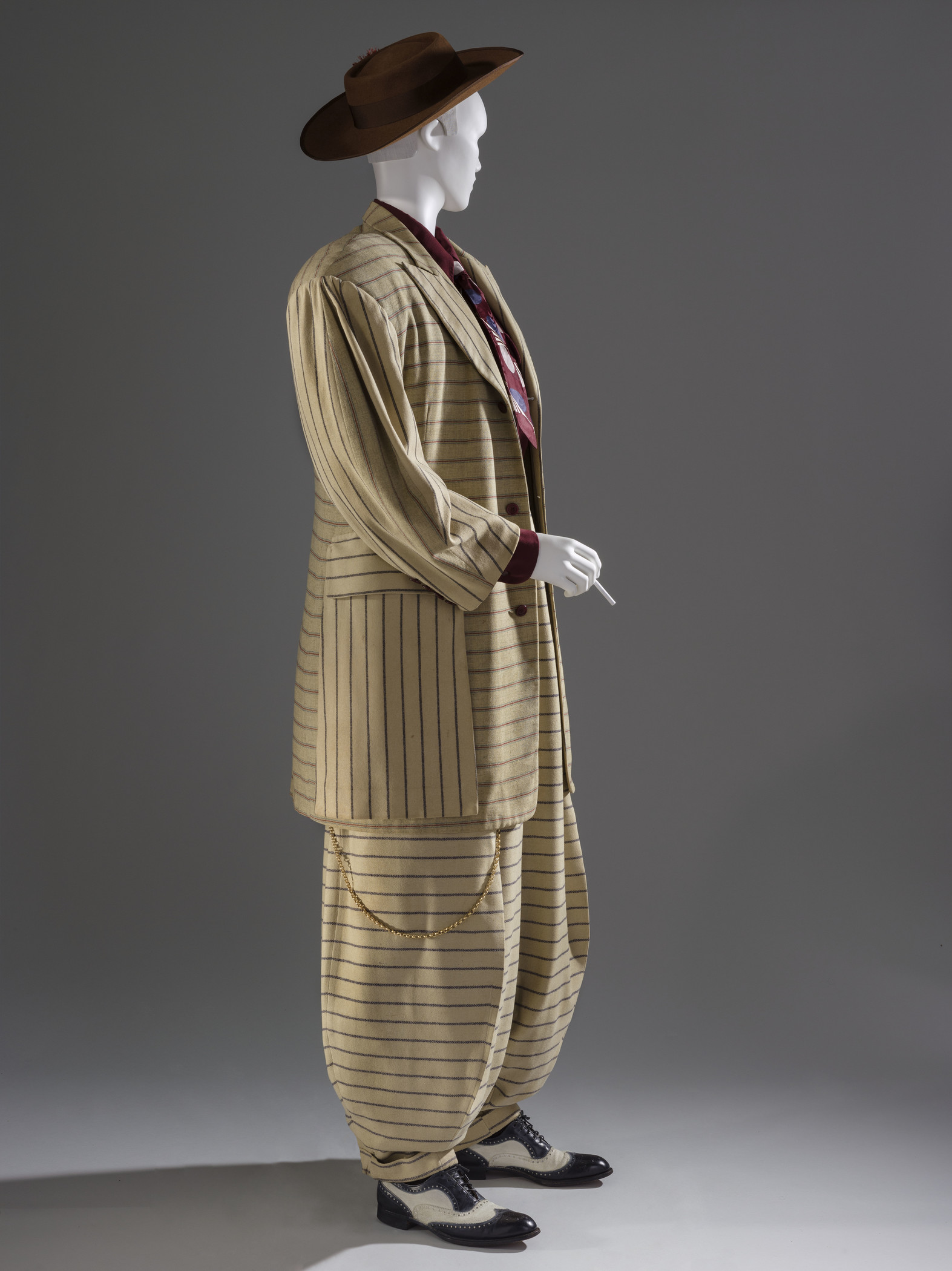
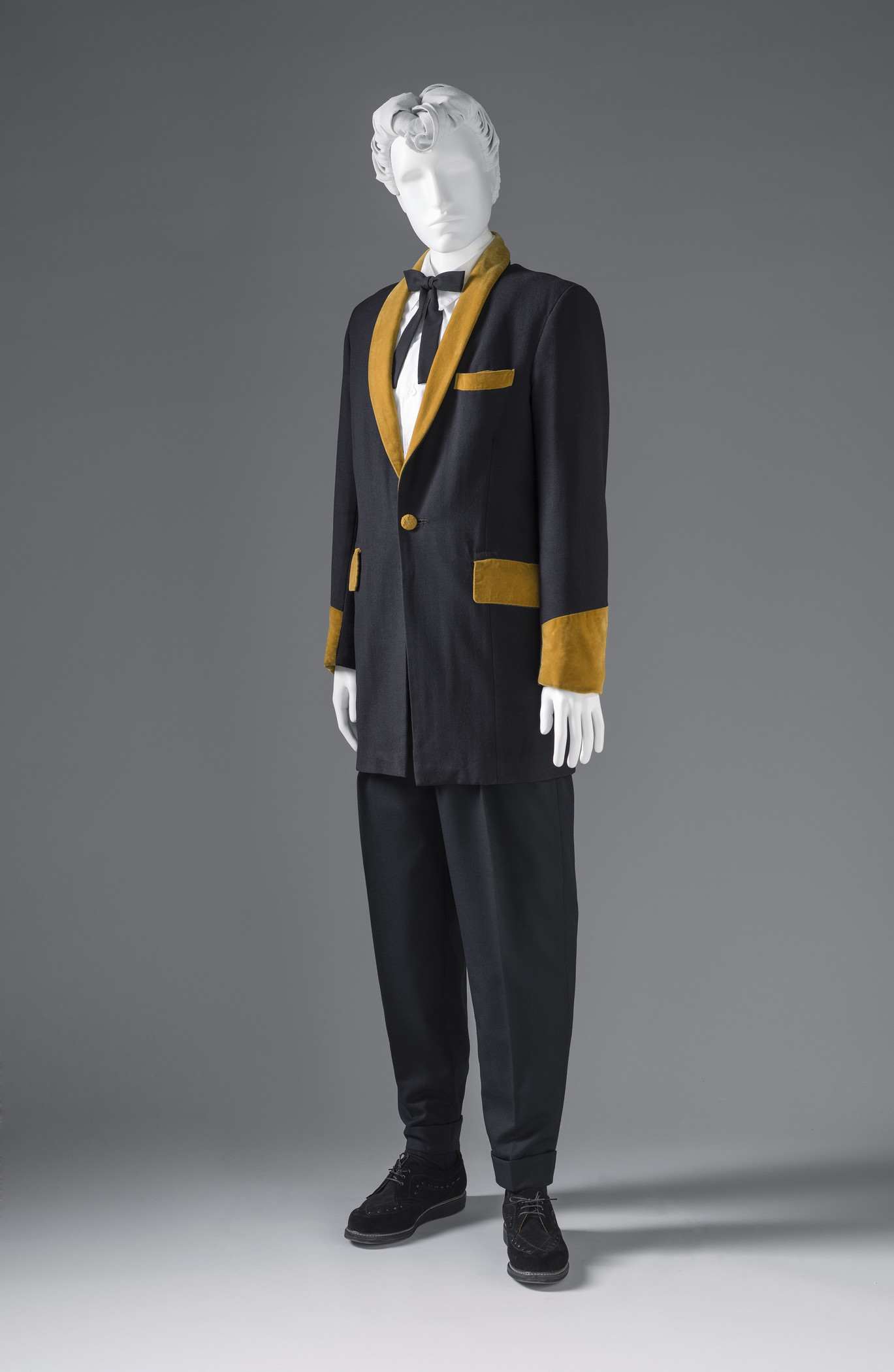
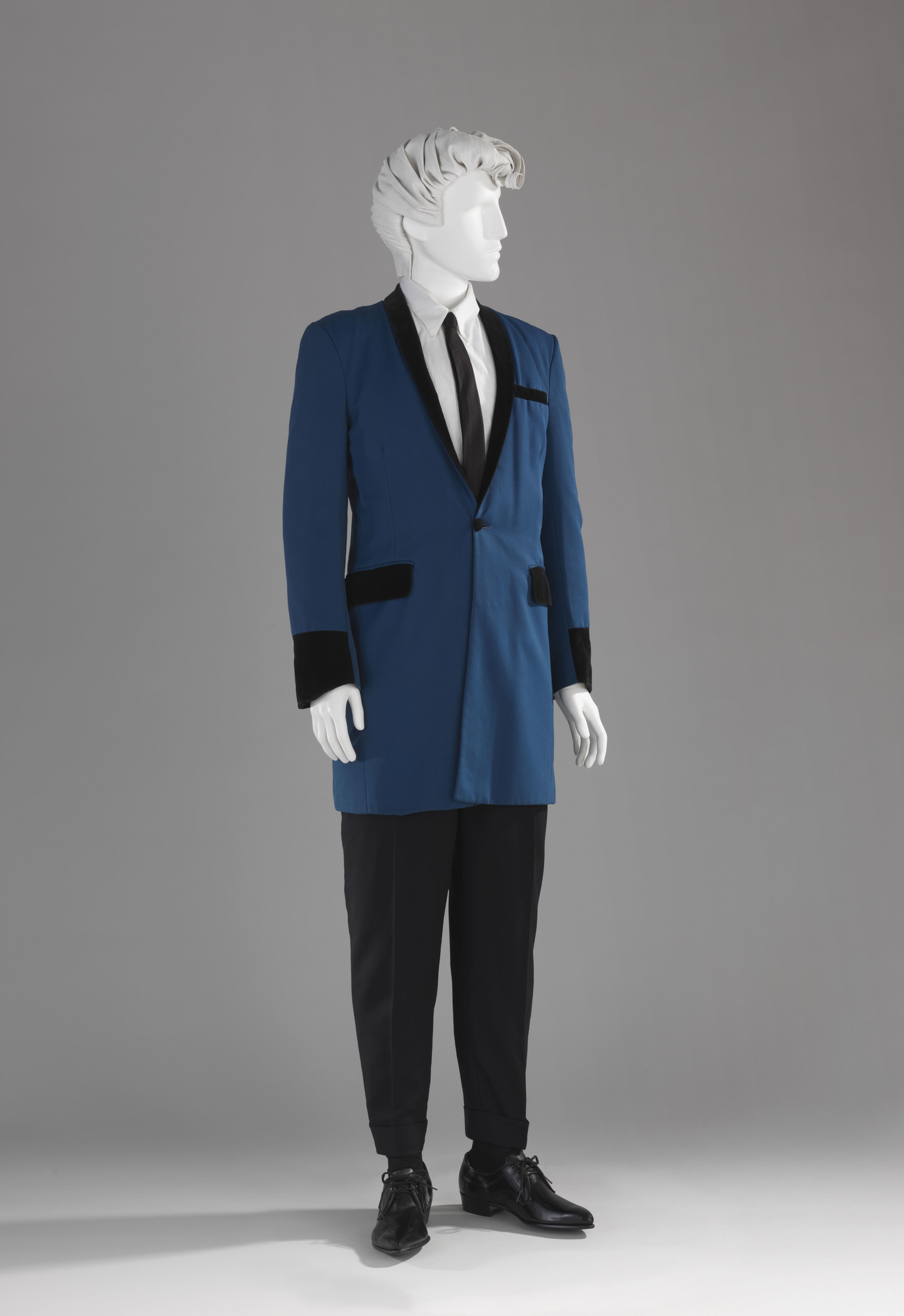
Fast-forward to the early 1970s. Enter Malcolm McLaren, all-around rouser of rabble. In 1971 he and partner Vivienne Westwood opened Let It Rock, a boutique in London’s Kings Road specializing in Teddy boy apparel. But ultimately McLaren and Westwood were not interested in mere nostalgia. Rebranding the shop as SEX in 1974, they added bondage and fetish gear to their inventory. These two elements—retro/vintage attire and in-your-face shock tactics—would soon become essential building blocks of punk (anti-)fashion.
Their transgressive designs (rebranded again, as Seditionaries, in 1976) were so outré that their customers could be physically attacked in public just for wearing them. This was no doubt a particular problem for anyone wearing a pair of bondage trousers, which were intentionally difficult to walk in—let alone run. Yet in McLaren’s view, the trousers (occasionally worn by Johnny Rotten, lead singer in the McLaren-managed Sex Pistols) were in fact liberating, representing the “whole idea of youth forever, of desire, of immortality… [producing] a situation in which [the wearer] would never have to return to normality again.”
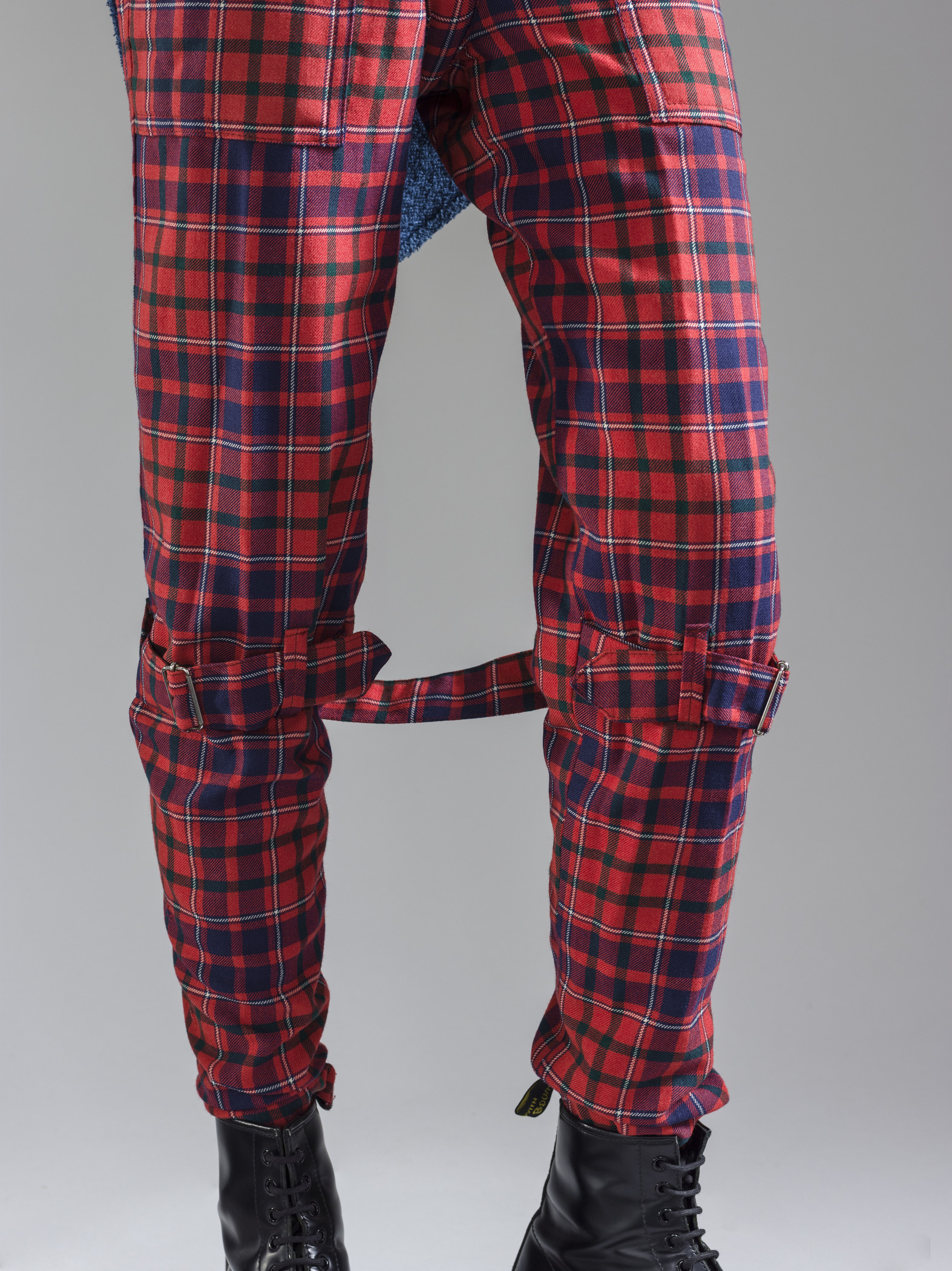
Punk music itself was also raw and even shocking, stripping rock back to its roots. Little wonder that the Ramones dressed like greasers while the Clash and the Pistols irreverently repurposed Teddy boy gear. One of the most remarkable demonstrations of this lineage is evident in the Clash’s first American television appearance. Guitarist Mick Jones is resplendent in—there it is!—a purple zoot suit; singer Joe Strummer wears the classic drainpipe trousers favored by Teddy boys; bassist Paul Simonon is decked out in rocker regalia, right down to his blue suede shoes; and drummer Topper Headon sports a pink-and-black shirt that Elvis himself would have loved.
But while punks might have drawn on teds and rockers for their music and style (see also Mick Jones’s full-on drape suit here), this was largely a one-way street, with teds taking offense—occasionally violently—at such appropriations. Still, the (bricolage) genie was out of the (second-hand) bottle. Punk was, as McLaren noted, simply a new expression of a long-established impulse. For countless young people, whether teds or punks or anything in between, clothes enacted a spectacle that suggested, for a while at least, that life need never be normal again.
Reigning Men: Fashion in Menswear, 1715–2015 opens at LACMA on April 10. The exhibition features 200 looks—including those pictured here—and celebrates a rich history of restraint and resplendence in menswear.



